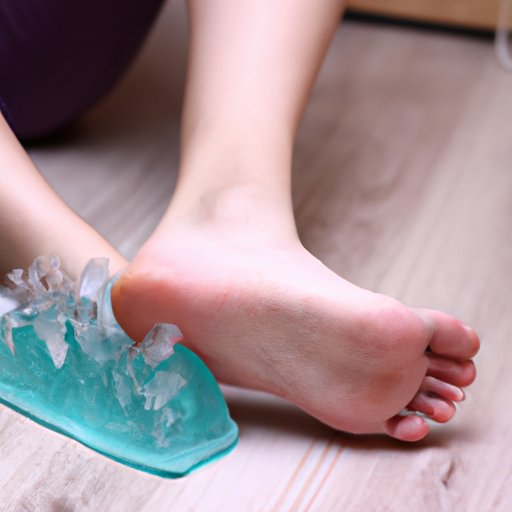
How to Get Rid of Pain on Top of Foot: Six Effective Methods
Foot pain is a common issue affecting people of all ages and walks of life. Pain on top of the foot is a particularly frustrating problem that can limit mobility and interfere with daily activities. The good news is that there are several effective ways to relieve foot pain and get back to feeling your best. In this article, we will explore six methods for getting rid of pain on top of the foot. From ice therapy to massage therapy, read on to discover the best strategies for relieving foot pain.
Ice Therapy
If you’re experiencing pain on top of the foot, one of the easiest and most effective ways to relieve it is through ice therapy. This method involves applying a cold compress or ice pack to the affected area to reduce swelling and inflammation.
To apply ice therapy, simply wrap a cold pack or frozen water bottle in a towel and place it on the top of your foot. Hold the ice pack in place for 15-20 minutes at a time, several times per day. Be sure to give your skin a break in between sessions to prevent damage from the cold.
Rest and Reduce Activity
When experiencing foot pain, it’s essential to rest and reduce physical activity to allow the foot time to heal properly. Continued stress on the affected area can cause further damage and prolong healing time.
To reduce activity, try to avoid high-impact exercises and stick to low-impact activities like swimming or biking. You may also want to consider using crutches or a walking boot to lessen the weight and pressure on your foot.
Use Supportive Footwear
Wearing supportive shoes can make a significant difference in alleviating foot pain. Shoes that offer proper arch support and cushioning can help distribute weight evenly and reduce impact on the foot.
When selecting shoes, look for ones with a wide toe box, good arch support, and a low heel. Avoid high heels and shoes that don’t provide adequate support, as these can exacerbate foot pain. Make sure your shoes fit properly and don’t pinch or rub against your foot, as this can cause blisters or further irritation.
Stretching Exercises
Sometimes, foot pain can be caused by tension or tightness in the foot and lower leg muscles. Stretching can help alleviate this tension and improve flexibility.
Try to incorporate stretching exercises into your daily routine to help alleviate foot pain. You can try simple stretches like calf stretches, toe curls, and ankle rotations. Aim to hold stretches for 30-60 seconds and repeat them several times per day.
Massage Therapy
Massage therapy can help promote relaxation, reduce tension, and alleviate pain in the foot and lower leg. You can perform self-massage on the affected area using your hands or a massage ball.
Apply gentle pressure to the top of your foot and slowly massage the area with circular motions. You can also use a massage ball to roll the foot and stimulate circulation and tension release. For more severe pain, consider seeking out a professional massage therapist for deeper massage techniques and targeted relief.
Pain-Relieving Medication
Over-the-counter pain medications like ibuprofen or acetaminophen can provide effective relief for foot pain. These medications work by reducing inflammation, swelling, and pain in the affected area.
It’s essential to consult with a healthcare professional before taking any medication, especially if you have other medical conditions or are taking other medications. Follow dosage instructions carefully and don’t exceed the recommended amount.
Conclusion
Pain on top of the foot can be a frustrating and uncomfortable problem, but with the right strategies, it can be effectively managed and alleviated. Consistent application of ice therapy, rest, supportive footwear, stretching exercises, massage therapy, and pain-relieving medication can greatly reduce and relieve foot pain. Remember, it’s essential to seek professional help if pain persists or worsens.




